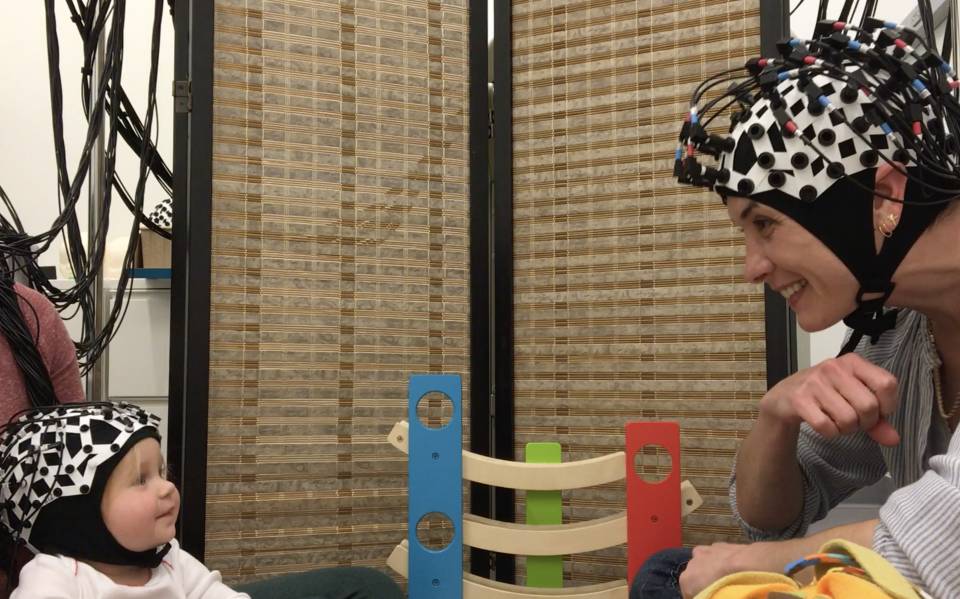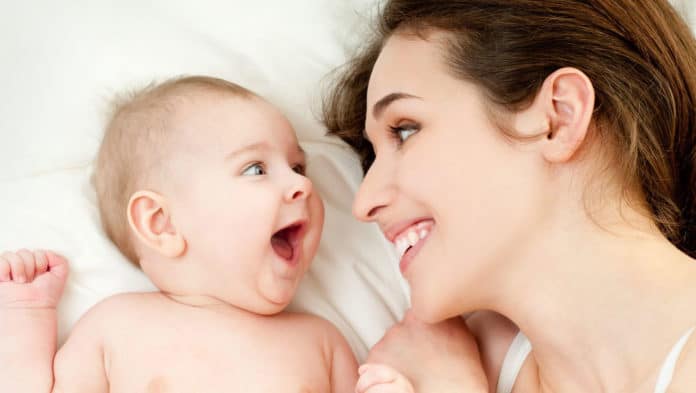A new study by the Princeton scientists examined live interactions between infants and adults. They found measurable similarities in their neural activity.
To study how baby and adult brains interact during natural play, scientists found that baby and adult brains ‘sync up’ during play. Using functional near-infrared spectroscopy (fNIRS), scientists observed that baby and adult brain activity rose and fell together as they shared toys and eye contact.
Elise Piazza, an associate research scholar in the Princeton Neuroscience Institute (PNI) said, “Previous research has shown that adults’ brains sync up when they watch movies and listen to stories, but little is known about how this ‘neural synchrony’ develops in the first years of life.”
Infancy is the foundational period for learning from adults, and the dynamics of the social environment have long been considered central to children’s development. This study has suggested that neural synchrony has important implications for social development and language learning.

For the study, scientists created a child-friendly method of recording brain activity simultaneously from baby and adult brains. They also developed a new dual-brain neuroimaging system that uses functional near-infrared spectroscopy (fNIRS), which safely records oxygenation in the blood as a proxy for neural activity. All this setup allowed scientists to record the neural coordination between babies and an adult while they played with toys, sang songs, and read a book.
Scientists simultaneously and continuously measured the brains of infants (N = 18; 9–15 months of age) and an adult while they communicated and played with each other. They found that during the face-to-face sessions, the babies’ brains were synchronized with the adult’s brain in several areas known to be involved in a high-level understanding of the world.
When the adult and infant were turned away from each other and engaging with other people, the coupling between them disappeared.
Scientists observed that the strongest coupling occurred in the prefrontal cortex, which is involved in learning, planning, and executive functioning and was previously thought to be quite underdeveloped during infancy.
Lew-Williams, who is a co-director of the Princeton Baby Lab said, “We were also surprised to find that the infant’s brain was often ‘leading’ the adult brain by a few seconds, suggesting that babies do not just passively receive input but may guide adults toward the next thing they’re going to focus on: which toy to pick up, which words to say.”
Elise Piazza, an associate research scholar in the Princeton Neuroscience Institute (PNI), said, “While communicating, the adult and child seem to form a feedback loop. That is, the adult’s brain seemed to predict when the infants would smile, the infants’ brains anticipated when the adult would use more ‘baby talk,’ and both brains tracked joint eye contact and joint attention to toys. So, when a baby and adult play together, their brains influence each other in dynamic ways.”
Scientists are continuing the research to investigate how this neural coupling relates to preschoolers’ early language learning. Their study is published in the journal Psychological Science.
